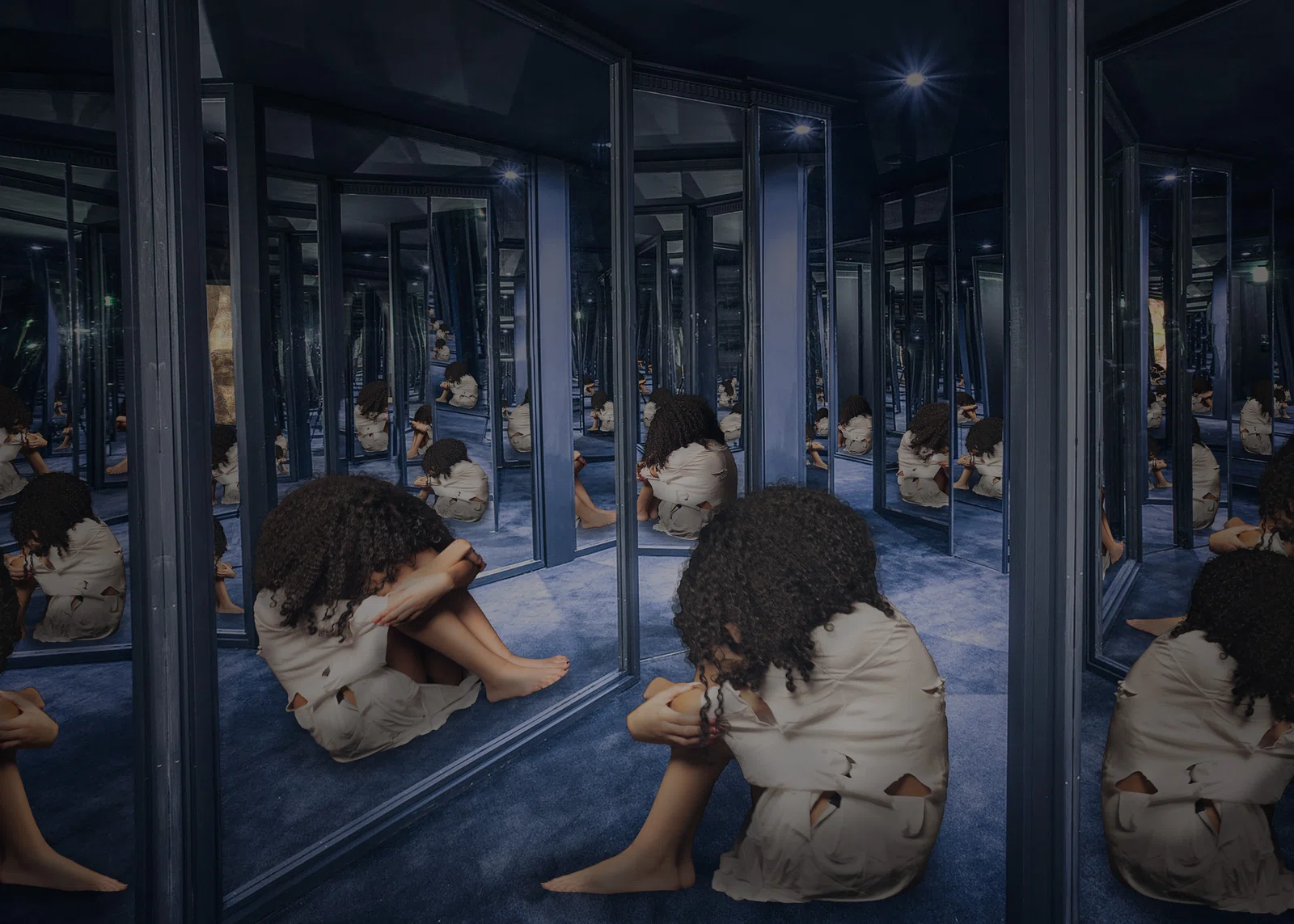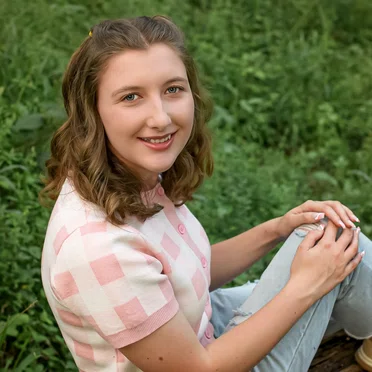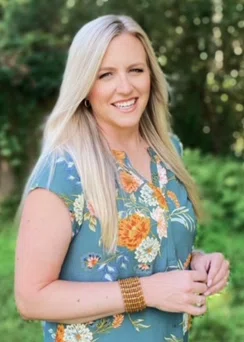







2-D Design
Caroline Yaman
River Bluff High School|Lexington, South Carolina

Trapped|19 x 13 in.
Material(s): Camera, photoshop, studio light
Process(es): Show how feels impossible to escape abuse. Duplicated her into each part of mirror and shaded.
Curatorial Note: Strong surreal image showing loneliness and despair.


“I researched different types of child abuse, the effect on the child, and what fantasy escapism is and how its used by children.”

Student statement
Student
statement
How can I show how fantasy escapism is used a copying mechanism for child abuse?
“Trapped” is a piece I created to visually show how a victim of child abuse feels. Everywhere they look, all they can see is their abuse, and it seems impossible to escape. So many times, they lose all hope. If you look closely, you can see two small spaces of light that represent that there is always a way out, even if it seems faint. This photo consists of the first part of my guiding question, How can I visually show how fantasy escapism is used as a coping mechanism for child abuse, where I show different forms/effects of child abuse? The small gaps of light are actually a small piece of a fantasy world that the victim will eventually escape into.
Fantasy escapism was a concept I learned about around a year ago, and I was instantly captivated by the concept. I thought the fact that a child's mind found a way to help cope with the trauma by distracting them and putting them into their own fantasy world was amazing to me. This concept reminded me of a project I did earlier in the year called “Magic Mirror,” where mirrors were used to transport people into different magical worlds. I began planning how I could combine these two ideas to make a cohesive portfolio about fantasy escapism and child abuse.
Before this portfolio, I had worked on a few other composite photography portfolios where I experimented with using mirrors as a means of transportation to a different world. This experimentation helped grow my editing skill and show me what worked and what didn’t when it came to shooting with mirrors and making composite images. I also watch many tutorials on how to make a “fantasy” composite image. They taught me many things like how to match lighting, change perspective in photoshop, shading, and use different brushes. One thing I was really struggling with was how to cut out her curly hair in a realistic way. After some experimentation, I ended up finding that the most effective way was to draw on her hair with different brushes to make her hair less choppy.

Caroline Yaman

The idea for this image came to me during my research on child abuse. Many victims described the experience as feeling “trapped,” “hopeless,” and “unavoidable,” to name a few. These adjectives reminded me of a mirror maze; in them, one can feel overwhelmed, like there is no escape. All you can see is your reflection and darkness. This seemed like a perfect metaphor for child abuse; everywhere you look, all you can see is your own terrible situation and this constant reminder and inability to escape, which leads to an overwhelming sense of helplessness. I chose to dress her in a simple ragged oversized white shirt as to leave her type of abuse unknown. I didn’t want any necessary details that pointed to just one type of abuse, but something that could point to all of them, verbal, neglect, physical, emotional, sexual. I wanted her to seem beaten down and vulnerable.
One thing my teacher, Mrs. Myers, brought to my attention was cohesiveness. I had many strong images in my portfolio, but not all of them fit together. Either their color was too different, or the emotion didn’t fit together. This pushed me to be intentional with every aspect of my photos to make sure they all told the story I was trying to tell. I reshot a few images completely and re-edited a few more so they would look like a solid body of work.
For future AP Art and Design students, don’t be afraid to completely redo a whole piece if it doesn’t fit. While that may seem terrifying at the moment, it will result in a much better portfolio. Also, ask for tons of honest feedback. When you have been working on a piece for countless hours, it can become very difficult to notice the image as a whole instead of just all the individual parts. While honest feedback may be tough to hear initially, it will ultimately help you grow exponentially as an artist.
Teacher Statement
Teacher Statement
Carlee Myers

I believe there are two key components to my students’ success as they develop their work for their AP Art and Design Portfolio. One of the two biggest keys is understanding the power of revision. This idea of revision is mastered in the process of reworking an artwork, redefining an idea, and revisiting the components of the portfolio to ensure the sustained investigation is a cohesive body of work. Revision is the key to growth, and at the end of the student’s AP artistic journey, they must show growth over time. Having students buy into the power of revision can be difficult. One, they may be “high flyers” that spent an incredible amount of time working on a piece and do not want to redo a successful artwork. Or, the opposite may be true. Getting other students to complete a single piece in the first place might be difficult. The key is to start the year off by creating an understanding of the revision process. Students should understand that revisions will be consistent and ultimately unlock a student’s absolute highest potential.
The beauty of the AP sustained investigation is that there is no specific number of “final” pieces that one must submit. Therefore, if a student needs to revise multiple times to get to a handful of well-planned, technically sound, thorough ideas, they can. This allows them to showcase their revision journey and their growth.
The second most important practice for students in my classroom is to create their projects within the framework of one or two of five key terms: Experimentation, Exploration, Discovery, Investigation, and Research. These terms guide everything we do when developing and designing our work. Before students begin their projects, they must brainstorm ways to incorporate experimentation, exploration, discovery, investigation, and/or research. This helps promote self-directed learning as each sustained investigation presents unique learning needs for each individual student. With Caroline’s piece, she knew she needed to investigate and explore ideas of editing lighting, perspective, and shading. She immersed herself in tutorials to help her grow in these areas and her hard work is evident in her finished work. At the completion of each project, as we participate in class critiques, the students must defend their incorporation of these terms within the artwork we view. This response is also scored on their rubrics. I find that having students mindfully utilize these terms significantly increases the depth and complexity of their work.

Caroline Yaman














